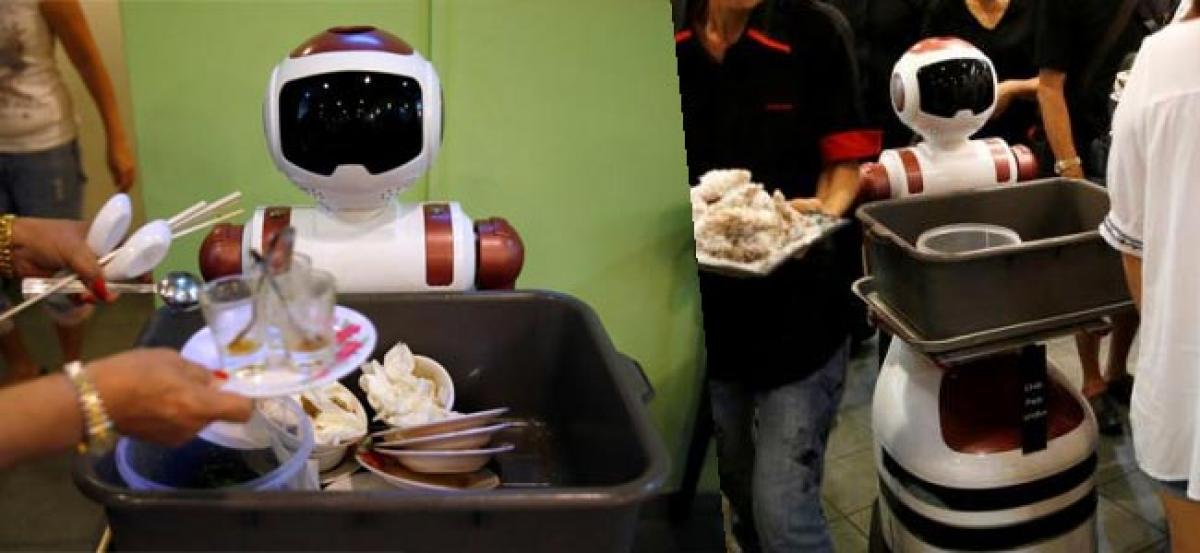Live
- G20 Leaders Will Talk About Climate, Taxes, and Trump's Return in Brazil
- COP29: CDRI announces $8 million funding for 12 projects to address climate crisis
- Anti-Telgu remarks: Actor Kasthuri Shankar moves court for bail
- Samsung AR Smart Glasses Set to Launch in 2025, Featuring Ray-Ban Meta-Like Design
- Kerala Industries Minister confident that new policy will boost plantation sector
- Madras HC plans inter-departmental monitoring committee to combat drug use in TN
- Bihar: Spotted deer dies due to heart attack in Banka district
- Mushtaq Ali T20: Shami to spearhead Bengal bowling attack, Gharami named captain
- Kharge's clarion call to oust Maharashtra's BJP-backed MahaYuti
- Why Ukraine’s Use of US Missiles Against Russia Could Lead to World War 3
Just In

Sherine Toh says her best days at work are when none of the 600-or-so staff at Singapore\'s Tung Lok Restaurants (TGLK.SI) quits, though such days are rare.
Sherine Toh says her best days at work are when none of the 600-or-so staff at Singapore's Tung Lok Restaurants (TGLK.SI) quits, though such days are rare.
The Chinese restaurant group is one of the thousands of businesses struggling with a labor crunch caused by foreign worker curbs, that threaten the city-state's already feeble growth rates.
"It has gotten much more tougher compared to the old days, five years back," said Toh, who has at least 20 vacancies to fill at any one time as head of human resources. The group closed some outlets because of the shortage.
The city's restaurants, hotels and retailers have become the biggest casualties of the labor crunch since Singapore accelerated restrictions on foreign workers in 2011 as political disquiet about immigration grew. But its highly-educated locals largely shun the late hours and unglamorous work.
To address the constraints, Singapore is pushing businesses to look to non-human solutions for their human resource challenges, including greater use of automation and robotics.
At Chilli Padi Nonya Cafe near a leafy university enclave, a tray-wielding robot roams the eatery, offering to collect plates from patrons in a childlike voice. Navigating its way through customers, it delivers the dirty dishes to the kitchen.
While tech powerhouses such as Japan, the U.S. and Germany invest billions in robotics to compete commercially in the emerging sector, Singapore's robots push is driven by a much more urgent need: the survival of some labor-strapped small and medium sized businesses may depend on them.
In the food and beverage industry, 90 percent of the businesses face the shortage and about a third are "really struggling," according to its lobby group.
"There is an increasing number of businesses that are up for sale," said Lim Rui Shan, executive director at the Restaurant Association of Singapore, which represents 2,200 outlets. "Some of them just shut down."
To encourage adoption, Singapore this year announced plans to spend S$450 million ($333 million) over three years to fund robot development and deployment.
Andrew Khaw, Infocomm Development Authority's senior director of productivity growth through information and communications technology, admits the take-up of robots is slower than he would like.
But he says the lack of manpower is a new operating reality businesses now need to accept.
"It's a bit of 'let's see who blinks first'. As far as the government is concerned, we can't go back on this policy," Khaw said.
Service robots can be found in Singapore - in hospitals and restaurants, as waiters or cleaners - but are less ubiquitous than might be expected for the aggressively tech-oriented economy.
James Xia, director at Unitech Mechatronics, which built the busboy robot Chilli Padi uses, sees export potential in his product but says development outlays mean commercialization is slow.
Xia thinks more upfront government grants, rather than the current post-project reimbursements, could accelerate development.
Another firm, Aitech Robotics and Automation, has developed a tea-lady robot that delivers food and drinks throughout a seven-storey building to workers in their offices.
But the company's business development manager, Eric Lee, says orders are slow and doesn't expect to make any money on the showcase robot.
Weak capital expenditure amid the global economic slowdown has made it difficult for a virtuous robot development cycle to rev up in Singapore.
"In a hypothetical situation where there were no foreign manpower curbs, then (domestic) growth may have been a little bit higher," said Selena Ling, head of treasury research for OCBC.
For now, manpower is just one of many economic challenges: Singapore cut its 2016 growth forecast this month after revising down its second-quarter growth as the service sector contracted.

© 2024 Hyderabad Media House Limited/The Hans India. All rights reserved. Powered by hocalwire.com







